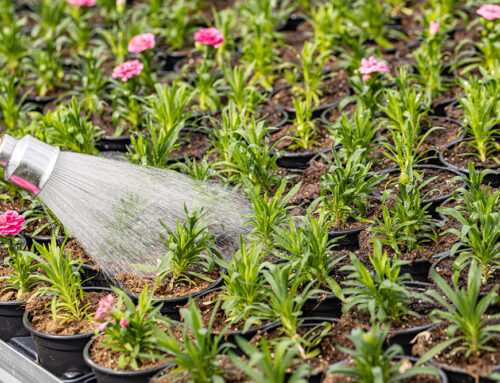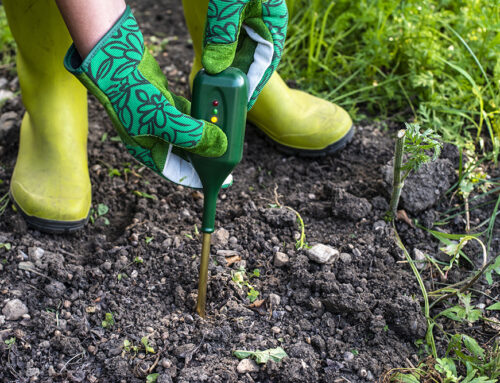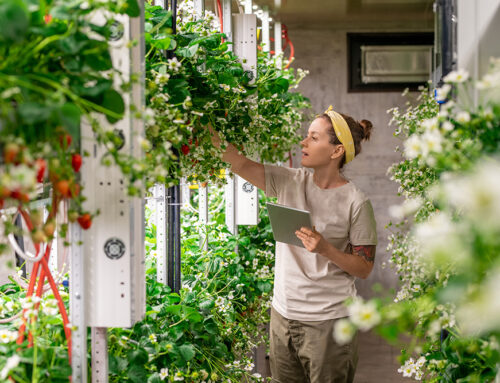Working from home has several environmental advantages. Because they do not have to drive to and from work, remote work employees often have lower carbon footprints. Fortunately, there are many additional ways to decrease your environmental impact while working remotely.
People are increasingly abandoning office jobs in favor of a home office space. Working from home provides several benefits, including better control over your work schedule and no commute expenditures. However, it also implies that you will consume more energy, which is terrible for the environment and your money! Fortunately, there are several sustainability efforts you can do to decrease your carbon footprint while still saving money on your power costs.
How can you be more sustainable working from home?
One of the most common ways to save energy when working remotely is by having natural light. This will help you feel more awake and energized throughout the day, which may result in feeling less sleepy at night. In addition, if your work requires computers or other devices that have screens on them, then it’s important to not sit close to these devices as they emit blue lights.
These can affect how tired we are and how well we sleep later on during the evening. Sitting near windows with plenty of natural light coming through will also give us enough vitamin D – this helps our bodies process calcium leading toward stronger bones.
Allowing yourself some time for breaks every couple of hours while working from home can really make a difference. When you feel tired, take a break and stretch or go outside to get some fresh air! Getting natural light is key – try approaching your work from the left side of the room if possible. This will allow for more natural light to come in through your window during early morning hours when it’s still dark outside.
Why is working from home more sustainable?
Many people think that working from home is less sustainable than going to the office every day. However, this might not always be true depending on your situation and how you work in general. In fact, there are many benefits of having a natural environment when doing business at home rather than in an office building or coffee shop.
When you work from home, natural light is a big advantage because it helps you feel less tired and more focused. This can be particularly important during winter months when days are short and nights long. In fact, the natural environment of your home office space might help reduce the stress that comes with commuting daily to an office building or coffee shop.
In addition to natural lighting, having a home office means taking care of the carbon footprint produced by commuting every day back and forth between different locations instead of staying at one place all day long – especially if your commute includes driving in traffic congestion! The lighter carbon footprint also takes into account other factors such as using appliances for heating or cooling purposes based on time spent inside working versus being out doing errands etc.
What are some examples of sustainable practices?
- Turn off electronic devices when not in use.
- Use natural light instead of electric bulbs during the day if possible.
- Consider composting food waste or recycling it via your local council services.
- Try to avoid using plastic bags for shopping, and bringing reusable bags with you each time you go out.
- Make sure that all electronics are turned off before unplugging them from their power sources (e.g., wall sockets).
- Use eco-friendly office supplies such as beeswax candles instead of scented candles made with petroleum byproducts which can worsen indoor air quality.
This is because even though they may appear to be switched off at first glance, there is still a small amount of energy being drawn by some devices which can add up over time! For example, many people leave their computer systems on overnight—something that could easily be avoided simply by shutting your computer down before going to bed.
In some cases, it may be worth keeping a device on for an extended period of time if the power save mode or sleep option does not suffice (e.g., leaving a TV plugged in and turned off). However, this is often only necessary during exceptionally long periods away from your home where you wouldn’t really expect any energy use!
Is working from home bad for the environment?
Working from home is not necessarily bad for the environment. It can save energy working remotely can result in more sustainable practices depending on how you do it.
One of the most common ways to save energy working home has natural light this help awake energized throughout the day which results feeling less sleepy night computer devices screens need to sit far away emit blue lights affect tired well sleep later evening sitting near windows plenty sunlight coming leads toward stronger bones allowing yourself time breaks – try approaching your work from the left side of the room if possible.
This will allow for more sunlight to come in through your window during early morning hours when it’s still dark outside. One of the best things about having an actual office space versus simply using space at home is that there are often shared spaces where people can gather for meetings. However, if you are really looking to save energy working at home then consider sharing your office with another person(s) who might also want to save energy when they work from home.
Does working from home save carbon footprint?
Working from home can save energy. For example, if your commute is half an hour each way every day, you’ll only spend one hour commuting a week. If it’s eight hours or more of driving to and from work (or other activities), this adds up to over 40 hours spent on the road in just one month! This time could be better used for doing things that benefit you instead of wasting energy by sitting behind the wheel. However, there are also some environmental disadvantages when working at home: energy use during business trips might even double because people take their home office equipment with them everywhere they go, printouts may not always get recycled as intended.
Remote work has its perks but sometimes sticking together saves energy which benefits everyone involved – including the environment.
Pack food in glass instead of plastic containers.
Make sure to finish the food and compost what you don’t eat.
Buy food that’s grown locally, not shipped from far away using a lot of fossil fuels. Use leftovers for your meals or snacks during the week, such as on sandwiches or salads.
Freeze them until it is time to use them up! Investing in eco-friendly home appliances such as refrigerators will save energy over time by being more sustainable than going out and buying new appliances every few years when yours breaks down due to old age.
Switch all lights off if you are leaving a room – do this even with LED lightbulbs because they still run, which uses a lot of energy bill.
When it comes to food, make sure you buy groceries that are worth the gas and energy used up to get them from a farm or store onto your kitchen table.
If you can, create a garden at home so that you will not need as much food shipped in – this can be done by planting herbs such as basil and mint outdoors! Investing in reusable water bottles is another great way of reducing waste because it reduces plastic bottle pollution.
Use refillable containers for coffee during the week instead of disposable cups every morning when working from home if possible – switch out paper towels for dishcloths whenever possible so less waste occurs. Make compost bins and start using those instead of throwing food away which creates methane gas emissions!
If you can walk to food stores instead of driving there. Recycle whenever possible and reduce the amount of food waste in your household! If working from home is not an option then try taking public transportation or biking it – this way, less gas will be consumed by cars on the road which makes a huge difference for our environment and climate change in general! Another great idea would be to take showers when it’s cloudy outside so that less water is used up with hot water (which uses energy) when compared to sunny days where more sun rays are available to heat up cold water without any natural resources needed at all since they come entirely naturally.
Is remote working sustainable?
The environmental impact of remote work can be huge. Working from home is one of the most sustainable ways to work, but it does come with its own environmental costs. When you are not commuting in a car or taking public transport every day, your carbon footprint will decrease significantly – especially if you live in an urban area where walking and cycling may be options for getting around. Working at home also means that no energy is used heating up buildings so this has environmental benefits too!
However, when we talk about “sustainable” there’s more than just carbon dioxide emissions involved; waste management is another important factor to consider here since having large quantities of paper documents lying around all day causes messiness plus extra resources consumed their creation (e.g., ink and paper).
Work from home sustainability practices
1. Reduce the temperature on the thermostat.
During the colder months, artificial heating is frequently required, and it can be difficult to preserve electricity. Turning your thermostat down by a few degrees, on the other hand, can reduce carbon and greenhouse gas emissions that effect climate change while also lowering your monthly gas and energy costs. According to Ovo Energy, lowering your thermostat down by 1°C can save your heating expenses by 10%. Instead of instinctively turning up the thermostat when working from home, try wearing extra layers of clothes to remain warm. Installing a programmable thermostat can also improve efficiency and make it easier to keep your home office space at a pleasant temperature.
2. Make the most of available natural light.
When selecting a space for your office, try to choose a location in your house that receives a lot of natural light. This reduces the need for artificial illumination when working during the day. Many studies have indicated that natural light increases productivity in the workplace. Increased exposure to natural light can also make you healthier and happier. Increase natural light in your workplace by placing your workstation near a window, eliminating obstacles from windows, and reflecting natural light using mirrors.
3. Make use of environmentally friendly products.
If you are renovating a room to establish a home office, choose sustainable materials to make the project as eco-friendly as feasible. Fortunately, there is a wide range of ecological building materials accessible, such as bamboo and recycled wood. Purchasing used or reconditioned office furniture is another straightforward method to assist the environment, minimize waste, and save money. Searching on sites like eBay and Facebook Marketplace should provide a plethora of used office furniture and equipment.
4. Do not use the printer.
Electronically storing files and documents is a simple method to make your job activities more environmentally friendly. Reduced printing saves money on office supplies such as paper and ink cartridges. Before printing, carefully examine if the document needs to be printed. In most situations, papers may be safely kept and retrieved online, eliminating the need for a physical copy.
5. Schedule a home energy audit.
If you want to make your home office space more energy-efficient, scheduling an energy audit is a good place to start. According to the experts at epcforyou.co.uk, an Energy Performance Certificate (EPC) “is a record of existing and projected energy savings of a home.” An authorized assessor will come to your home and give it a rating based on its energy performance. You will also receive advice on how to enhance your energy efficiency. This might include adding more insulation, updating aging equipment, or replacing your boiler, among other things. Completing these house renovations may appear to be costly, but the energy-saving advantages should rapidly offset the expenditures.
6. Unplug all gadgets from the power source.
Did you know that even when electronic gadgets are plugged in but not in use, they use energy? Leaving gadgets connected to the wall wastes a lot of energy and might raise your power bill. It also emits hazardous pollutants and places undue strain on the environment. Make your home office as environmentally friendly as possible by unplugging electronic equipment like your laptop, computer monitor, and printer from the wall when not in use. You should also ensure that the gadgets are configured to the most environmentally friendly mode. For example, to save electricity, reduce the brightness of your screen.
7. Purchase environmentally friendly office products.
Every day, the average officer generates around two pounds of trash. Fortunately, there is a wide range of eco-friendly office products available to help you minimize waste and increase efficiency. Seek out office products that are recycled, waste-free, or biodegradable.
Paperless notebooks, for example, allow you to erase notes and reuse your notebook for other activities and projects. This is considerably more environmentally friendly than using a regular paper notepad and replacing it once it has been used. There is also a wide range of biodegradable pens manufactured from recyclable materials such as plastic or cardboard. When looking for materials for your home office, try to go for the most environmentally friendly choices.







Leave A Comment